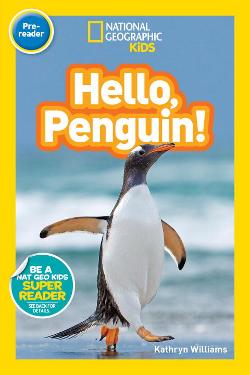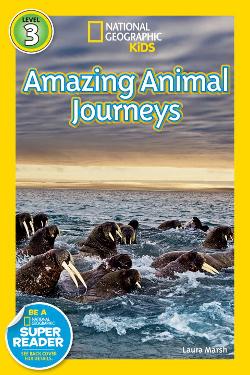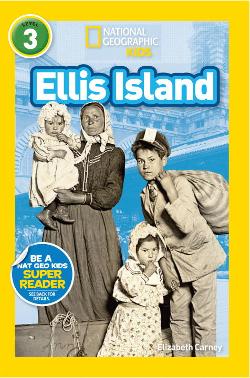Filled with stunning photography, National Geographic has created an easy reader series that helps children build important literacy skills while also learning about the world around them. The series has four different reading levels based on the number of words, difficulty of the vocabulary, and the complexity of the sentence structure. There are a wide variety of topics covered; each one engaging and interesting to children.
*This post contains affiliate links. To read my full disclosure CLICK HERE.
Pre-Reader
The Pre-Reader Level books contain bold, beautiful photographs with one or two word captions describing the picture and generally one sentence comprised of a few short words on each page. There is a Vocabulary Tree at the beginning of the books that addresses potentially new or difficult words mentioned throughout the text. The books end with a question or a challenge that checks readers’ understanding of the topic. For example, in Swim, Fish! Explore the Coral Reef by Susan B. Neuman, the last page asks the reader to identify the animals that live in the coral reef. In Hop, Bunny! Explore the Forest by Susan B. Neuman, readers are encouraged to create their own story that takes place in the forest.
Highlights:
- One sentence per page
- Vocabulary Tree introduces key words
- Check for understanding in the back of the book
Level 1
The books in the Level 1 series include nonfiction elements such as table of contents, headings, captions, and sometimes diagrams. There are generally one or two sentences to a page and the photographs help to support the text and give visual clues to better understand more difficult vocabulary. Important words and their definition appear in a breakout box on the page where the words are presented instead of simply in a glossary in the back of the book. This is helpful for new readers, so that they don’t have to turn to the back to find out what new words mean. This reading level also includes a check for understanding in the back and additional fun elements such as jokes are mixed in.
Highlights:
- One or two sentences per page
- Nonfiction elements usually include table of contents, headings, captions, and some diagrams
- Photographs help support the text
- Definitions of important words are provided alongside text
- Fun features such as jokes are mixed in
Level 2
Books in this level usually have around four or five sentences to a page and introduce more difficult vocabulary. The same nonfiction elements seen in Level 1 such as table of contents, headings, captions, etc. are included with additional features such as comparison charts, diagrams, and maps.
Highlights:
- Four or five sentences to a page
- More difficult vocabulary is introduced
- Nonfiction elements usually include table of contents, headings, captions, diagrams, comparison charts, and maps
Level 3
Books in Level 3 are geared toward children who are reading fluently and are ready for more challenging vocabulary and complex sentence structure. Sentences can appear in paragraphs and more advanced topics are covered such as migration, robotics, the Titanic, and historical figures including Nelson Mandela and Sonia Sotomayor. The same nonfiction elements that appear in the other levels are present with the addition of timelines.
Highlights:
- Sentences can appear in paragraphs
- Nonfiction elements usually include table of contents, headings, captions, diagrams, comparison charts, maps, and timelines.
- More advanced topics are covered
LibraryMom Side Note:
The books in each level are written by a variety of authors, so they can have a different feel to them. For example, some are from an animal’s point of view while others are told from a third person narrative. Some have repeating sentences and slowly introduce new words while others have a more unique cadence.



























